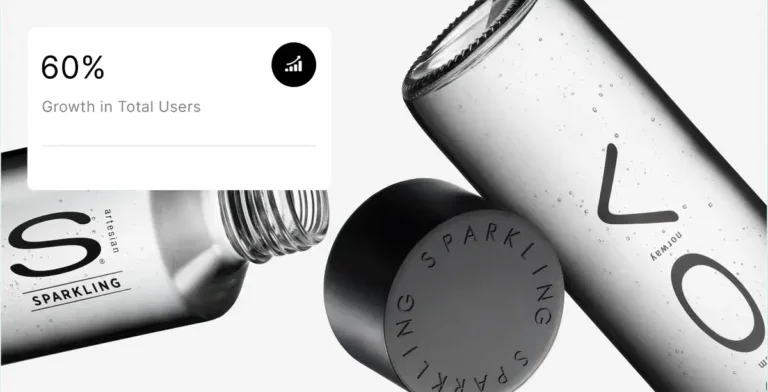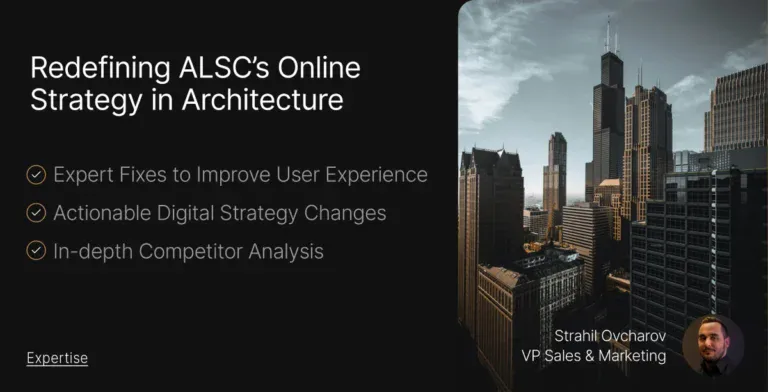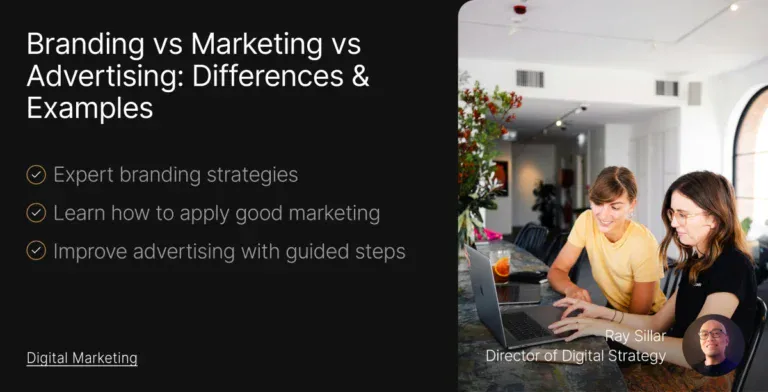For SaaS platforms using Spotify, organic search isn’t just a marketing channel; it’s their main area of competition. Brands like Yotpo, Stamped, and LoyaltyLion pour resources into ranking for terms like “Shopify review app” or “eCommerce loyalty software.” Those who show up first in SERPs win the chance to influence merchants at the exact moment they’re searching for solutions to increase customer trust, referrals, or repeat purchases.
Okendo is well-positioned in this space. Its review, loyalty, referral, and survey products give merchants the ability to transform customer feedback into revenue. But as Blacksmith’s recent audit revealed, much of that organic potential is being held back by technical inefficiencies, weak keyword alignment, and missed opportunities to showcase authority.
As Strahil Ovcharov, Managing Partner at Blacksmith, summarized: “You’ve built a great organic brand. Now it’s time to bring in proper SEO practices and proper AI practices for discoverability.”
1. Ensuring Every Product Page Performs
In SaaS, the homepage and key product pages are often the first touchpoints for merchants comparing software.
Yet Okendo’s homepage weighed in at 28 MB, nearly 10 times the recommended size. Uncompressed product videos and oversized imagery were slowing load times, particularly on mobile.
For a Shopify merchant evaluating review platforms, a sluggish site creates friction before they’ve even explored the features. Even worse, Google interprets this as a negative signal, making it harder for pages like Okendo Loyalty or Okendo Referrals to rank above competitors.
“Page performance is more than a box-checking exercise,” Strahil noted. “It’s one of the few SEO signals you can fully control.” He pointed to 29 404s, 255 redirect loops, and 1,300 images without alt tags. All of which erode authority that could otherwise power rankings for category-defining keywords like Shopify product reviews app or customer loyalty software for eCommerce.
Takeaway: For SaaS brands in eCommerce, technical SEO isn’t background maintenance; it directly impacts whether merchants can even find your product pages when researching integrations.
2. Engagement as Proof of Relevance for E-Commerce Buyers
Once a Shopify merchant lands on a product page, the question becomes: do they engage or bounce? Okendo’s engagement rate was only 54%, far below the 85%+ benchmark that signals relevance to Google.
Several UX factors could be suppressing interaction. The platform’s dark mode design may appeal to developers, but for non-technical marketing managers (the ones evaluating review apps and loyalty tools), it can feel harder to scan and digest.
“Dark mode is for power users,” Strahil said. “Every redesign I’ve flipped from dark to light mode has performed better.”
Equally critical is how trust is presented.
SaaS buyers must ensure that the app has proven itself. Merchant case studies, Shopify App Store ratings, partner badges, and recognizable brand logos are key. In Okendo’s case, they bury most, if not all, of these social proof elements below the fold, which in turn reduces credibility.
FAQs essential for clarifying integrations, pricing, and use cases are also missing on important product pages.
Takeaway: Engagement tells Google and buyers the same thing: this product is relevant. By showing trust signals earlier, adding FAQs tied to Shopify integrations, and reconsidering UI choices, Okendo can keep merchants exploring its reviews, referrals, and loyalty features longer.
3. Capturing the Right Merchant Searches
In SaaS, the wrong keyword strategy can attract traffic without conversion. That’s exactly what happened when Okendo’s past agency over-optimized for terms like “referral code,” drawing in shoppers looking for coupons instead of merchants evaluating referral software.
As Strahil warned, “SEO people are like a gun. You need someone who points the gun in the right direction.”
The audit showed missing H1s and H2s across hundreds of pages, along with metadata that failed to target how eCommerce decision-makers actually search. Category-defining terms like Shopify reviews app, loyalty program software for eCommerce, and UGC platform Shopify were nowhere to be found.
Aligning metadata with these queries ensures that when a DTC brand Googles “best Shopify product review app,” Okendo doesn’t lose that click to Yotpo or Judge.me. Headers also matter: a clear H1 like “Loyalty Software for Shopify Brands” immediately tells both Google and the merchant that they’re in the right place.

Takeaway: For SaaS that want to compete, metadata is more than SEO hygiene; it’s how you capture merchants actively shopping for tools. Okendo must rebuild titles, descriptions, and headers around intent-driven queries tied directly to its product suite.
4. Building Topical Authority Around Customer Marketing SaaS
Ranking once for a keyword is a start, but sustaining authority requires depth. SaaS leaders like Yotpo dominate by clustering dozens of articles, case studies, and feature pages around themes like reviews, referrals, and loyalty.
In contrast, Okendo has scattered content. Some blog posts target product updates, others chase unrelated definitions, and product pages aren’t consistently supported by SEO-aligned resources.
“You guys probably have five main pillars of content,” Strahil explained. “Build a matrix around them. Every blog, every product page, and every FAQ should ladder up to those pillars.”
For Okendo, those pillars are clear: Reviews, Loyalty, Referrals, Surveys, and UGC. By creating structured clusters around each, such as “Best Shopify review apps” supported by guides on “How to Increase Review Volume” or “Designing Review Request Flows,” Okendo can build topical authority that outpaces point-solution competitors.
Takeaway: Topical authority in SaaS means owning not just one keyword but the entire conversation. Okendo must cluster its content into defined pillars that reflect its full customer marketing suite, ensuring Shopify merchants see it as the definitive authority.
5. Preparing for AI-Driven Discovery in eCommerce Search
The future of search is already shifting. Merchants increasingly ask AI tools like ChatGPT or Perplexity questions such as “What’s the best Shopify app for reviews and loyalty?” The answers these bots surface can directly drive adoption.
“Schema is more important now than ever, especially with LLMs,” Strahil explained. Beyond schema, he urged Okendo to port its entire support knowledge base into a custom GPT. “We’re doing it now, and it’s driving traffic from the most qualified users, the ones moving directly from an AI bot to your site.”
For Okendo, this means transforming product documentation, setup guides, and integration FAQs into AI-ready resources. A DTC marketer asking ChatGPT, “How do I set up referral tracking in Shopify?” You can direct it straight to Okendo if you structure and index its content correctly.

Competitors who delay won’t just lose rankings; they’ll lose discoverability in the new front door of SaaS search.
Takeaway: Optimizing for AI search ensures Okendo’s products show up where the next generation of Shopify merchants is asking questions. By preparing FAQs and product docs for LLMs, Okendo can future-proof its lead flow.
Turning Organic Visibility into SaaS Adoption
Okendo’s SEO audit revealed both gaps and opportunities. The gaps, bloated pages, weak engagement, missing metadata, and scattered content are holding back visibility at a time when every competitor in the Shopify ecosystem is aggressively investing in organic growth.
The opportunities are just as clear: streamline technical SEO, optimize engagement for SaaS buyers, realign metadata with merchant intent, build topical authority across its five product pillars, and prepare for AI-driven discovery.
As Strahil summarized: “You’ve built a great organic brand. Now it’s time to bring in proper SEO practices and proper AI practices for discoverability.”
For SaaS companies selling into the Shopify ecosystem, the lesson is universal. It’s not enough to build the product and rely on adoption. Organic discoverability through Google today and AI search tomorrow is the lever that determines who gets found first and who gets left behind.









